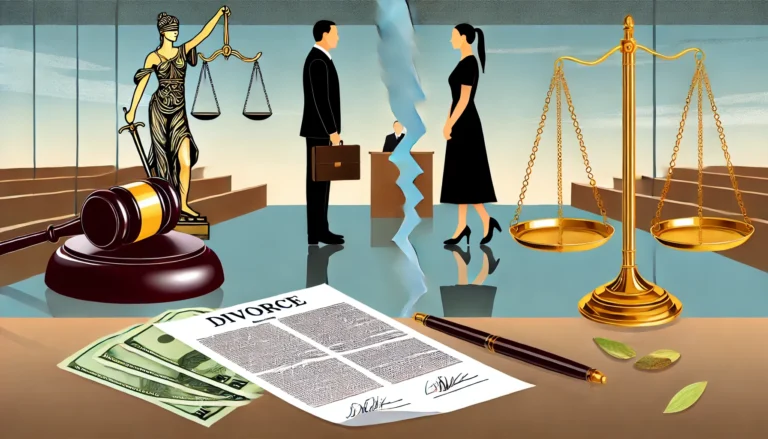Divorce is a complex and emotional process that involves significant legal steps. Navigating through the divorce procedure can be overwhelming without a clear understanding of what to expect. This guide aims to provide a detailed overview of the legal aspects involved in divorce, offering insights into each step to help you prepare and make informed decisions.
1. Filing the Divorce Petition
The divorce process begins when one spouse files a petition with the court to dissolve the marriage. This document, known as the divorce petition or complaint, outlines basic information about the marriage, such as the names of the spouses, any children involved, and the reason for seeking a divorce. The petitioner must file this petition in the appropriate court, usually in the jurisdiction where one or both spouses reside.
2. Serving the Divorce Papers
Once the divorce petition is filed, the next step is to serve the divorce papers to the other spouse, known as the respondent. This process ensures that the respondent is officially notified of the divorce proceedings. Service of process can be done through various methods, including personal delivery, mail, or through a professional process server. The respondent must acknowledge receipt of the papers, which allows the case to move forward.
3. Responding to the Divorce Petition
After being served with the divorce papers, the respondent has a specific period, typically 20 to 30 days, to respond. The response, or answer, allows the respondent to agree or disagree with the statements in the petition. In some cases, the respondent may also file a counterclaim to address additional issues or requests. Failing to respond within the designated timeframe may result in a default judgment in favor of the petitioner.
4. Temporary Orders
During the divorce process, either spouse may request temporary orders from the court to address immediate needs. These orders can cover various issues such as child custody, spousal support, and property use. Temporary orders are intended to maintain stability until a final divorce decree is issued. A hearing may be required, where both parties can present their arguments before a judge decides on the temporary arrangements.
5. Discovery and Information Exchange
Discovery is a crucial phase in the divorce process, involving the exchange of information and documents between the spouses. This step helps both parties gather evidence related to income, assets, debts, and other relevant financial matters. Discovery methods include interrogatories, requests for documents, and depositions. Proper disclosure ensures transparency and aids in making informed decisions regarding property division and support.
6. Negotiation and Settlement Discussions
Negotiation and settlement discussions are key aspects of the divorce process, allowing spouses to resolve issues outside of court. Through negotiation, both parties can reach agreements on matters such as property division, child custody, and spousal support. Mediation may also be utilized to facilitate discussions with the help of a neutral third party. Successful negotiations can lead to a settlement agreement, avoiding the need for a trial.
7. Trial and Court Proceedings
If the spouses cannot reach a settlement, the divorce case proceeds to trial. During the trial, both parties present their evidence and arguments before a judge. The judge then makes decisions on contested issues based on the information provided. A divorce trial can be lengthy and costly, with outcomes that may not satisfy both parties. Therefore, trial is often considered a last resort when negotiations fail.
8. Final Divorce Decree
The final divorce decree is the court’s official order that legally ends the marriage. This document outlines the terms of the divorce, including property division, custody arrangements, support obligations, and any other pertinent issues. Once the decree is signed by the judge, the divorce is finalized, and both parties must comply with its terms. Any disputes or violations of the decree may require further legal action.
9. Post-Divorce Modifications
Even after a divorce is finalized, certain aspects of the decree may be subject to modification. Changes in circumstances, such as job loss, relocation, or changes in the needs of children, may warrant a request for modification. Common areas for modification include child custody, child support, and spousal support. Modifications require court approval, and both parties must demonstrate a substantial change in circumstances.
10. Understanding Your Rights and Seeking Legal Help
Understanding your legal rights and responsibilities is essential throughout the divorce process. Each step involves critical decisions that can have long-term implications. Seeking the guidance of an experienced divorce attorney can help you navigate the complexities of the legal system, protect your interests, and ensure that your rights are upheld. Legal assistance can provide clarity, reduce stress, and improve the overall outcome of your divorce proceedings.

